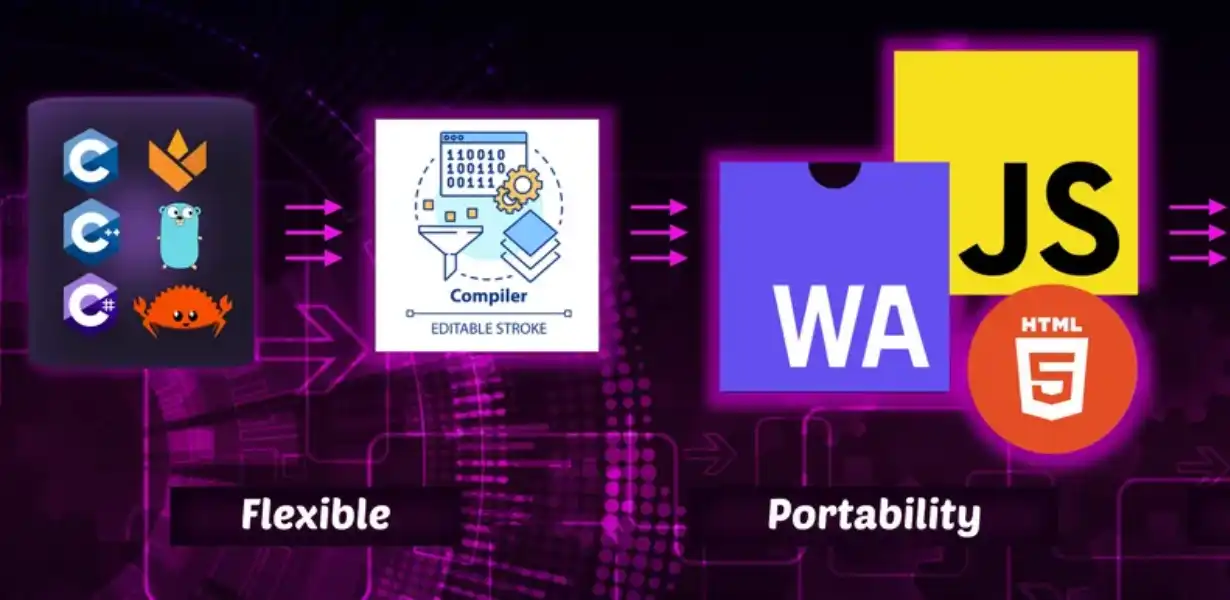
Boosting Performance: Mastering WebAssembly Integration in JavaScript Basics
- Post
- August 5, 2023
- JavaScript, JavaScript Basics, Web Development
- 0 Comments
Welcome to our comprehensive guide on boosting performance by mastering WebAssembly integration in JavaScript basics. In this article, we delve into the world of WebAssembly and explore how it can significantly enhance the performance of your JavaScript applications. As technology evolves, it becomes crucial to optimize our code to meet the demands of modern web applications. With WebAssembly, you can harness the power of low-level languages while seamlessly integrating with JavaScript. Let’s dive in and unlock the full potential of WebAssembly to supercharge your JavaScript code!
Understanding WebAssembly: The Basics
WebAssembly, often abbreviated as WASM, is a binary instruction format that serves as a compact and efficient complement to JavaScript. It enables high-performance execution on web browsers, allowing developers to run code written in low-level languages like C++, Rust, and others. By leveraging WebAssembly, you can bridge the gap between the performance of native code and the cross-platform capabilities of JavaScript.
WebAssembly operates on a virtual machine that enables it to execute code at near-native speeds. With WebAssembly, you can optimize CPU-intensive tasks, making it an ideal choice for performance-critical applications and computationally-intensive tasks.
WebAssembly Integration in JavaScript
Integrating WebAssembly into your JavaScript applications is a straightforward process. Here’s a step-by-step guide to get you started:
Setting Up a Project
Create a new project directory and navigate to it using the terminal.
Initialize a new npm project using npm init command.
Install the required dependencies, including the WebAssembly JavaScript API.
Compiling WebAssembly Code
Write your performance-critical code in a supported low-level language (e.g., C++, Rust).
Use a compatible compiler (e.g., Emscripten) to compile your code into WebAssembly bytecode.
Loading WebAssembly Modules
Load the compiled WebAssembly module using the JavaScript API’s WebAssembly.instantiateStreaming method.
Handle the asynchronous nature of loading the module and catching any potential errors.
Interacting with WebAssembly
Access functions from the WebAssembly module and call them from your JavaScript code.
Use the WebAssembly.Memory object to manage memory interactions between JavaScript and WebAssembly.
Benefits of WebAssembly Integration
WebAssembly offers several key advantages that can significantly boost the performance of your JavaScript applications:
Near-Native Performance: By using WebAssembly, you can achieve execution speeds that rival native code, making your applications faster and more responsive.
Cross-Platform Compatibility: WebAssembly is supported across major web browsers, allowing you to deliver consistent performance on different platforms.
Improved Loading Times: Smaller WebAssembly bytecode files lead to faster loading times, enhancing the overall user experience.
Secure Execution: WebAssembly runs in a sandboxed environment, ensuring that it doesn’t compromise the security of the user’s device.
Common Performance Use Cases for WebAssembly
WebAssembly is particularly valuable in scenarios where performance optimization is critical. Some common use cases include:
Computational-Intensive Tasks
For computationally-intensive tasks, like scientific simulations or video/audio processing, WebAssembly can provide significant performance improvements.
Gaming and Multimedia
In the gaming and multimedia industries, where smooth and high-quality graphics are essential, WebAssembly can help achieve the desired performance levels.
Virtual Reality and Augmented Reality
WebAssembly can enhance the performance of virtual and augmented reality applications, ensuring a seamless and immersive user experience.
Final Words
Mastering WebAssembly integration in JavaScript basics empowers you to unleash the true potential of your web applications. By optimizing performance and leveraging the power of low-level languages, you can deliver faster, more efficient, and secure experiences to your users. Embrace the possibilities of WebAssembly and take your JavaScript applications to new heights.
Commonly Asked Questions
Q1. Can WebAssembly Replace JavaScript Completely?
While WebAssembly is a powerful tool for performance optimization, it is not intended to replace JavaScript entirely. Instead, it complements JavaScript by handling performance-critical tasks efficiently.
Q2. Does WebAssembly Support Garbage Collection?
Yes, WebAssembly supports garbage collection, making memory management more efficient and secure.
Q3. Is WebAssembly Supported in All Browsers?
WebAssembly is supported in all modern web browsers, including Chrome, Firefox, Safari, and Edge, ensuring broad compatibility.
Q4. Can I Debug WebAssembly Code?
Yes, you can debug WebAssembly code using browser developer tools, just like JavaScript.
Q5. Is WebAssembly Safe to Use?
WebAssembly is designed to run in a secure sandboxed environment, ensuring that it doesn’t pose any security risks to users.




